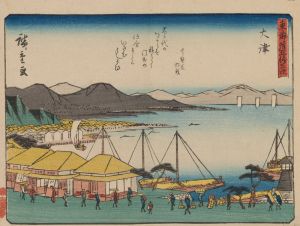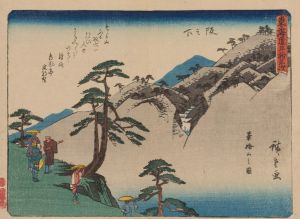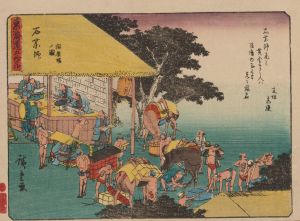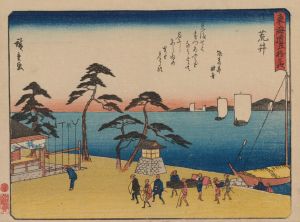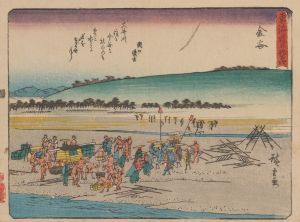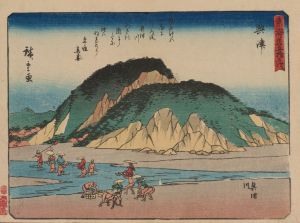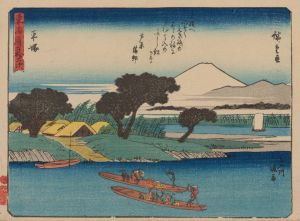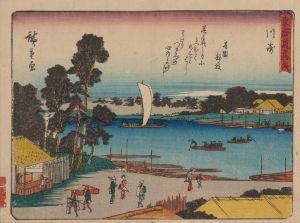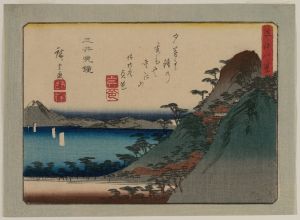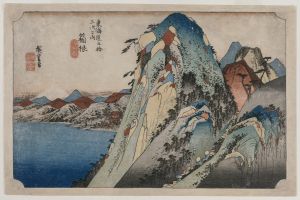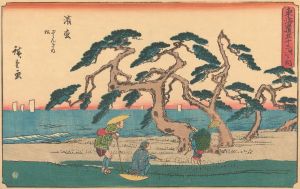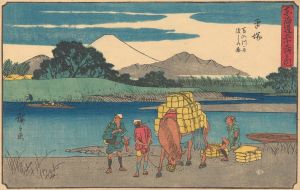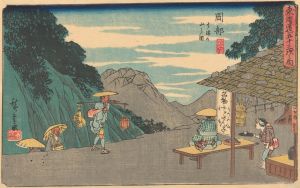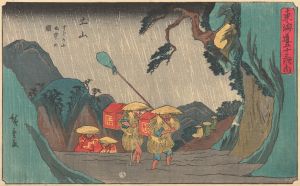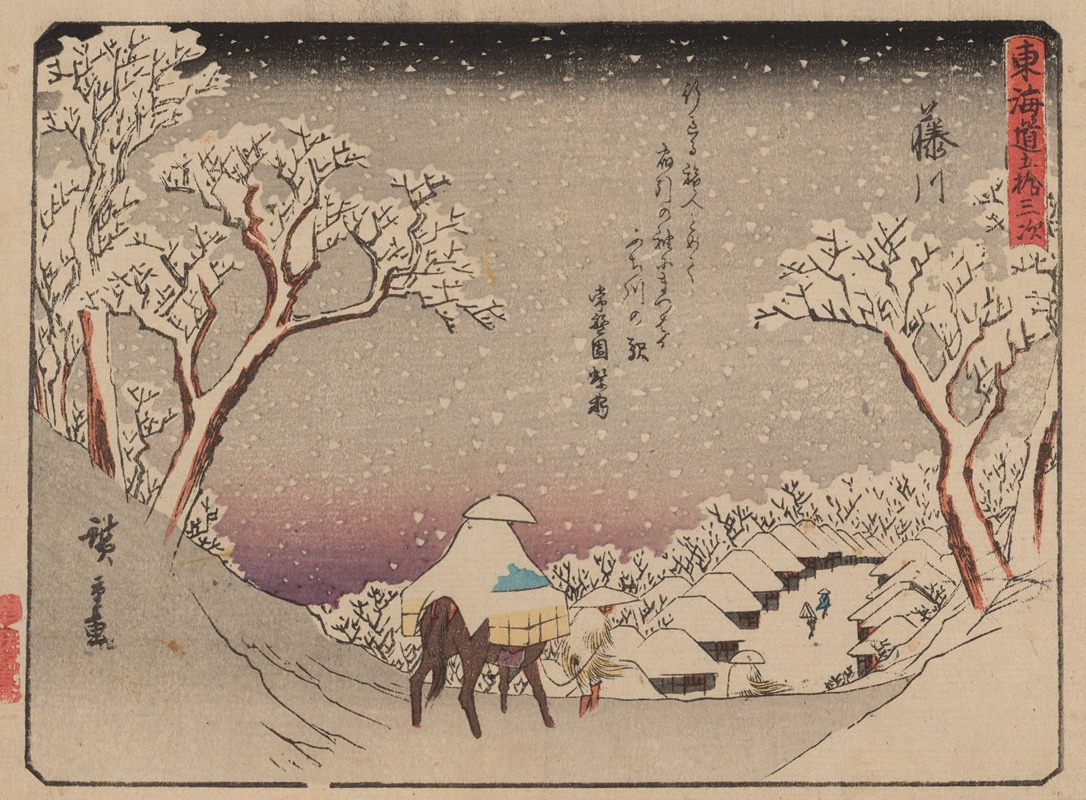
Tokaido gojusantsugi, Pl.38
A hand-painted replica of Andō Hiroshige’s masterpiece Tokaido gojusantsugi, Pl.38, meticulously crafted by professional artists to capture the true essence of the original. Each piece is created with museum-quality canvas and rare mineral pigments, carefully painted by experienced artists with delicate brushstrokes and rich, layered colors to perfectly recreate the texture of the original artwork. Unlike machine-printed reproductions, this hand-painted version brings the painting to life, infused with the artist’s emotions and skill in every stroke. Whether for personal collection or home decoration, it instantly elevates the artistic atmosphere of any space.
Andō Hiroshige, a renowned Japanese ukiyo-e artist of the Edo period, is celebrated for his landscape prints and his series depicting the Tokaido road, a vital route connecting Edo (modern-day Tokyo) to Kyoto. One of the most famous series by Hiroshige is "The Fifty-three Stations of the Tokaido" (Tokaido gojusantsugi), which consists of 55 prints, including the starting point at Nihonbashi in Edo and the terminus at Kyoto. Each print in the series captures a specific station along the Tokaido road, showcasing the diverse landscapes and daily life of travelers during that era.
Plate 38 in this series is titled "Fujikawa," representing the 38th station along the Tokaido road. This print, like others in the series, is a woodblock print, a popular medium in Japan during the Edo period. Hiroshige's work is characterized by its vibrant colors, dynamic compositions, and the ability to convey the atmosphere and mood of the depicted scenes.
In "Fujikawa," Hiroshige captures the essence of a bustling post town, which served as a rest stop for travelers. The print typically features a lively scene with travelers and locals interacting, set against the backdrop of the natural landscape. The Tokaido road was not only a route for travelers but also a conduit for cultural exchange and economic activity, and Hiroshige's prints reflect this vibrancy.
Hiroshige's attention to detail and his ability to depict the subtleties of weather, time of day, and season are evident in this work. The composition often includes elements such as mountains, rivers, and trees, which are integral to the Japanese landscape. The use of perspective and the arrangement of figures and structures guide the viewer's eye through the scene, creating a sense of movement and depth.
The "Fujikawa" print, like others in the series, is not just a representation of a specific location but also an artistic interpretation that conveys the experience of travel along the Tokaido road. Hiroshige's work is known for its poetic quality, capturing the transient beauty of nature and the human experience within it.
Hiroshige's "The Fifty-three Stations of the Tokaido" series was highly influential and remains a significant contribution to Japanese art. The series not only provides a visual record of the Tokaido road during the Edo period but also reflects the cultural and social dynamics of the time. Hiroshige's ability to blend realism with artistic expression has made his work timeless, continuing to captivate audiences worldwide.
The popularity of Hiroshige's Tokaido series extended beyond Japan, influencing Western artists such as Vincent van Gogh and Claude Monet, who admired the composition and use of color in ukiyo-e prints. Hiroshige's work played a role in the Japonisme movement in Europe during the late 19th century, which saw a fascination with Japanese art and aesthetics.
In summary, Andō Hiroshige's "Fujikawa" from "The Fifty-three Stations of the Tokaido" series is a masterful depiction of a post town along the historic Tokaido road. Through his skillful use of color, composition, and perspective, Hiroshige captures the essence of travel and the beauty of the Japanese landscape, leaving a lasting legacy in the world of art.





